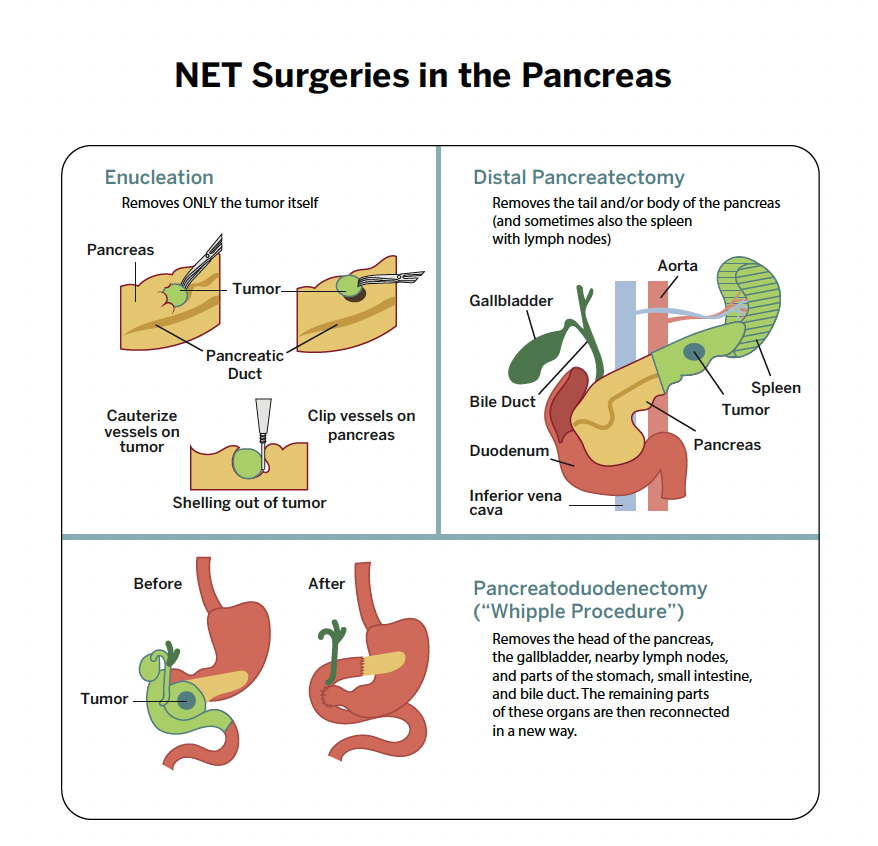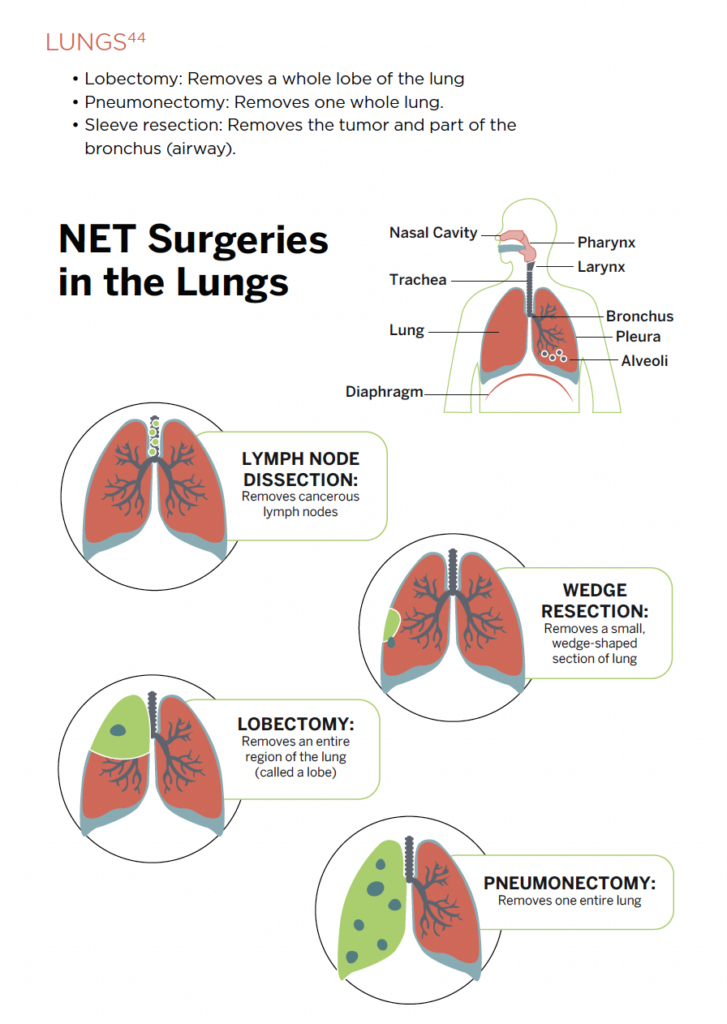Make a gift before the end of the year to drive research breakthroughs in 2026.
Home » For Patients » Treatment of NETs » Surgery
Surgery is a common treatment for NETs, with 72% of patients reporting having surgery. The type of surgery depends on the tumor site, grade, stage, and disease burden (the severity of disease and its impact on daily life). Surgeons also consider a patient’s age, overall health, and any other chronic diseases as criteria for surgical treatment options.
Surgery can sometimes remove early-stage tumors that have not spread, offering patients the possibility of a curative treatment. In advanced cases, surgery can reduce tumor bulk to treat symptoms and improve the quality of life.
Distal pancreatectomy: Removes the body and tail of the pancreas. The spleen may also be removed if cancer has spread to the spleen.
Central pancreatectomy: Removes the neck and part of the body of the pancreas. The procedure spares the tail to help maintain the function of the pancreas.
Enucleation: Removes the tumor only. This surgery may be done when cancer occurs in one place in the pancreas.
Pancreatoduodenectomy (Whipple procedure): The head of the pancreas, gallbladder, nearby lymph nodes, part of the stomach, small intestine, and bile duct are removed, although enough of the pancreas is left to make digestive juices and insulin. The patient’s condition determines which organs are to be removed during this procedure.

Appendectomy: Removes the appendix
Cryosurgery: Uses an instrument to freeze and destroy the NET tissue. This type of treatment is also called cryotherapy. The doctor may use ultrasound to guide the device.
Endoscopic resection: Removes a small tumor that is on the inner lining of the GI tract. An endoscope is inserted through the mouth and passed through the esophagus to the stomach and, sometimes, the duodenum.
Gastrectomy: Removes all or part of the stomach
Liver resection: Remove portions of the liver where cancer can be found
Liver transplant: Removes the whole liver and replaces it with a healthy donated liver
Local excision: Remove the tumor and a small amount of healthy tissue around it
Resection: Removes all or part of the organ that contains cancer. Nearby lymph nodes may also be removed.
Segmental colon resection or hemicolectomy: Removes part of the colon as well as the nearby tissue, blood vessels, and nearby lymph nodes
Small bowel resection: Removes all or part of the small intestine and the nearby organs where cancer may have spread
Abdominoperineal resection (APR): Major surgery using different approaches to remove the anus, rectum, and part of the sigmoid colon through an incision made in the abdomen. The end of the intestine is attached to an opening in the surface of the stomach, and the body waste is collected in a disposable bag outside of the body. This opening is called a colostomy. Lymph nodes that contain cancer may also be removed during this procedure.

Lobectomy: Removes a whole lobe of the lung
Pneumonectomy: Removes one whole lung
Sleeve resection: Removes the tumor and part of the bronchus (airway)
Wedge resection: Removes a tumor and some of the healthy tissue around it in the shape of a small wedge. If a larger amount of tissue is taken, it is called a segmental resection.
Lymph node dissection: Removes lymph nodes to check for or prevent the spread of cancer
Sometimes surgeons may recommend surgery to take out some of a tumor, even if it is not possible to remove all of it. This is called cytoreduction or debulking surgery and can be a treatment option for liver tumors.
